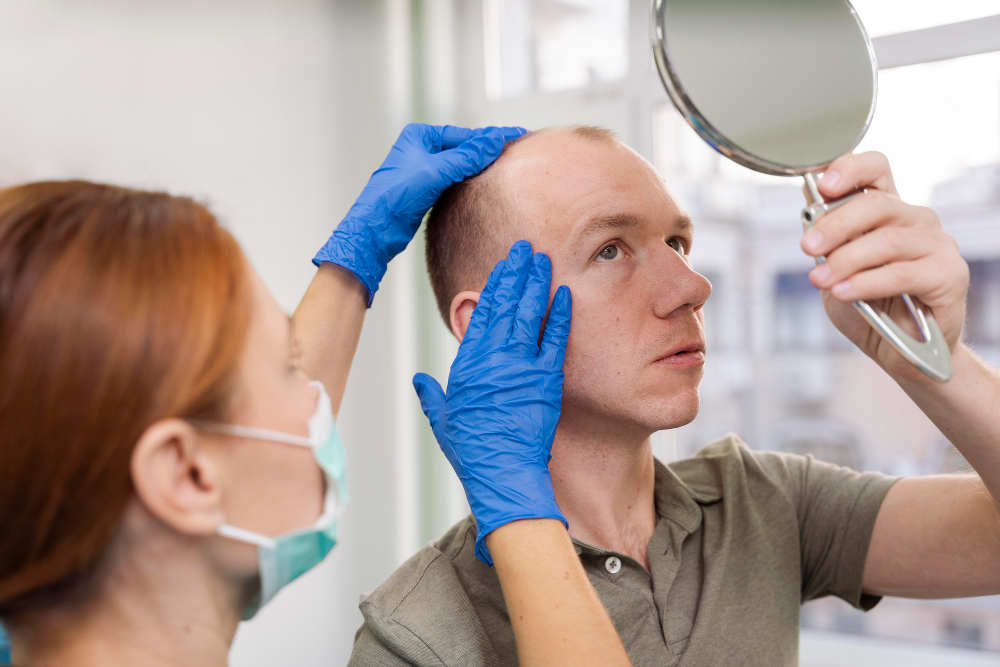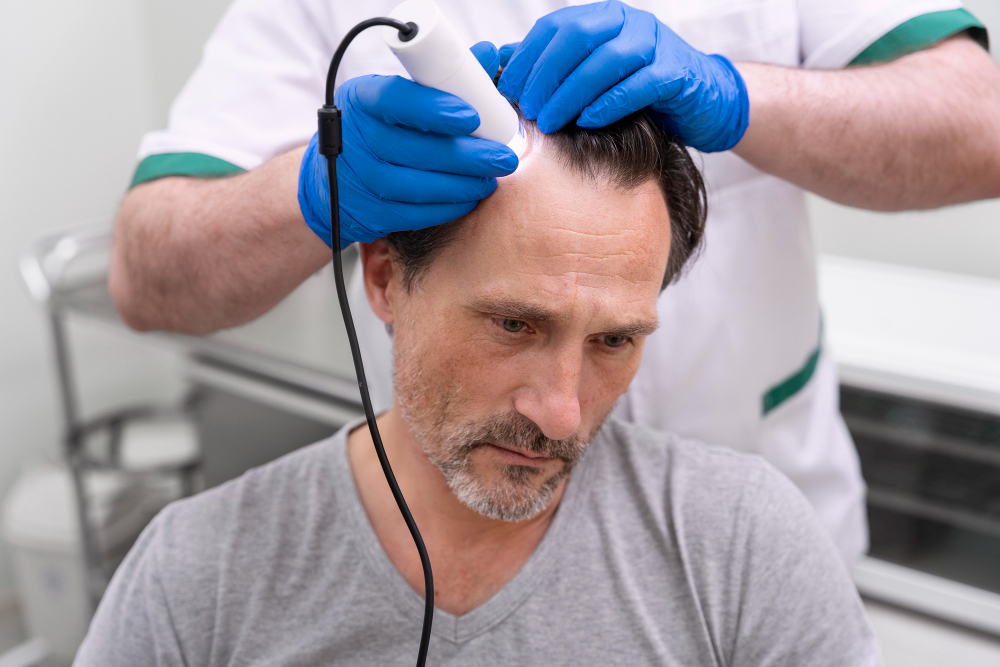
Fue Hair Transplant
FUE hair transplant surgery is an organ transplant, and therefore it requires the services of a professional and experienced hair transplant surgeon.
The 1950s witnessed the initial use of FUE hair transplantation. That is one of the most popular techniques because visuality is at the top of people's minds. Every year, millions of individuals worldwide use sapphire hair transplantation therapy to solve their hair loss issues and baldness.
According to psychological and scientific research, natural hair restoration has been linked to increased self-confidence in individuals who have it and better social interactions among people who reconciled with themselves and began to like looking in the mirror due to the FUE Hair Transplantation technique.
There is a lot of confusion regarding FUE Hair Transplantation on the internet, considering that those conducting hair transplantations have numerous concerns. Most studies are conducted online to identify the best clinic, but patients frequently find themselves in a bind.
How is an FUE hair transplant performed? Do I experience any discomfort during the hair transplant procedure? How long does this take, and how is the healing process after the surgery? Is the technique for scalp rejuvenation complicated? Is it dangerous to have a hair transplant operation? We attempted to address these concerns in our blog content.
What is the process of Fue Hair Transplanting?
If you have no idea what FUE hair transplantation is, it's similar to planting a flower and transplanting it to another location. We remove the flower without damaging the root by surrounding it with earth before covering it with something else in the example we give. Hair transplantation is simple in practice:
- Hair follicles are removed with tissue surrounding them.
- Incisions are made for them to be replaced.
- Grafts are placed in these created canals.
The harvesting/extracting of grafts from the donor area and the opening of incisions/canals are known as the "harvesting" and "opening" stages, respectively. The patient's demands determine the order in which the healing process occurs.
Before undergoing an FUE hair transplant, it is crucial to thoroughly follow the procedures outlined in our Before And After The FUE Hair Transplantation article. You should follow the doctor's recommendations for nutrition and proper cloth selection.
The essential thing is to follow the hair transplantation procedure, which involves assessing the patient's neck, head, face, forehead region, and hair follicles, as well as giving an explanation of all possible outcomes and a realistic prospect for the patient.
 Otherwise, people are dissatisfied and misled. As we previously stated in many of our articles, a failed hair transplant fails to meet the patient's expectations. To prevent this, it is usually best to have a sapphire hair transplant created especially for you by enlisting the help of specialists and clinics that you can trust.
Otherwise, people are dissatisfied and misled. As we previously stated in many of our articles, a failed hair transplant fails to meet the patient's expectations. To prevent this, it is usually best to have a sapphire hair transplant created especially for you by enlisting the help of specialists and clinics that you can trust.
Local anaesthetic is first applied to the patient's head during an FUE hair transplant operation. We can do this with a needle or a needle-free anaesthesia technique using cutting-edge technology equipment. For more information on this topic, see our Needle-Free Anesthesia article.
This technique is excellent for people frightened of needles and who have not had anaesthesia injected via a syringe. Needle-free anaesthesia is frequently marketed as a gimmick, with patients being assured that they will experience "painless anaesthetics." Our patients should be aware that no matter how painless it appears, a needle-free anaesthetic isn't pleasant at all. Patients who avoid utilizing local anaesthesia may take a few medicines to relax them ahead of time. During the sapphire hair transplant procedure, the patient is conscious and does not feel any pain or discomfort after local anaesthesia. Grafts are medical terms for tissues taken from one part of the body and transplanted to another without vascular or nerve connection to be transferred. Hair follicles are harvested with some surrounding tissue, and hence they are referred to as grafts in hair transplantation. Grafts are generally removed from the nape region as the initial step of FUE hair transplantation. We may open canals first if the patient's hair loss isn't too severe and the doctor believes enough grafts can be taken from the donor area.
The proportion of transplanted sapphire hair follicles is determined by restricting additional grafts from the donor area. Their chances for survival are improved by lowering the time the grafts remain outside the body. If there isn't good hair in the neck region, a surgeon who will perform FUE hair transplantation may also opt to remove bodily hair with hair transplants from various parts of the body. One of the first things our patients ask is whether FUE hair transplantation with grafts from other individuals is possible. Our patients should be aware that the grafts must come from the person to be transplanted, and hair transplantation on another individual is not yet medically feasible.
Nurses who conduct FUE hair transplantation operations separate the grafts by storing them at the proper temperature in specific chemicals and categorizing them based on the number of follicles and structural characteristics. This stage is critical for the patient to obtain healthy and natural-looking hair following a hair transplant. Otherwise, multiple-graft transplants may be done in the front line, resulting in an unnatural appearance.
The moment the canal is opened is the most crucial step in FUE hair transplantation, which gives a natural look and has unfavourable repercussions in terms of appearance if not done correctly. Individual characteristics determine the growth pattern of one's hair, and each person's growing areas are different. To effectively transplant the hair, we should open the canals to be implanted at the proper angle and depth to that person's natural hair. At this stage, the skill and experience of the hair transplant surgeon are critical factors.
The last stage of hair transplantation is the placement of the follicles in the implants.
Patients may go back to their homes or hotels on the same day of the hair transplantation procedure. The conclusion of the operation is highly significant because we can complete it in a single day. It's crucial to pay attention to the topics addressed in our post, After Hair Transplantation Operation and areas stressed by physicians after surgery at this time. One of the essential things to consider in preserving the area where hair transplants were made safe from impacts.
Is it difficult and painful to undergo the process of hair transplantation?
The most frequent question about FUE Hair Transplantation is whether it is painful or difficult. During the operation, local anaesthesia prevents patients from feeling pain. Patients have become more tolerant to local anaesthesia with the needle-free technique that has been utilized in recent years, which reduces anxiety about needles. Before the sapphire hair transplantation, most patients are nervous. This anxiety usually fades once the surgery begins and finishes. Patients do not feel intense or painful pain. In the days following the operation, bruising and oedema can happen.
A post-FUE hair transplant symptoms are only aesthetically unpleasant and don't put the patient's health at risk. The bruising and oedema in the face area will subside in a few days. You may use Doctors' prescription pain medication to alleviate the post-FUE hair transplant procedure more quickly.
Is it risky to perform a Fue Hair Transplantion?
If done by specialists who are skilled and experienced in hair transplantation with appropriate equipment and sanitary conditions, FUE is not a hazardous procedure. Occasionally, specific difficulties may be observed. Smile Hair Clinic is always there for its clients after surgery, so they can quickly overcome any issues they encounter.
FUE hair transplantation is a long-term therapy. While some people achieve excellent outcomes with a single surgery, others who require a smaller donor region and more area to be transplanted may need to undergo another operation within 1-2 years after the initial sapphire hair transplant.
Patients are ecstatic, and there is a period after FUE hair transplantation when patients can see how their hair will progress in a few weeks. Hair loss is typical after that. In the first six months following the transplant, shed hair will begin to grow in a healthy and renewed manner once again, with the process taking 12-24 months to complete.